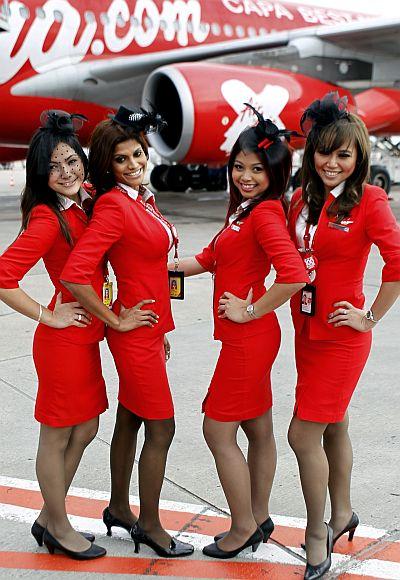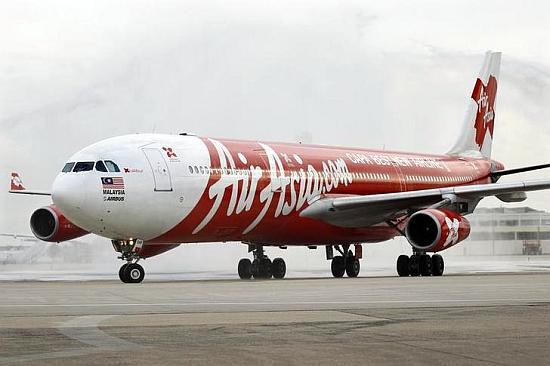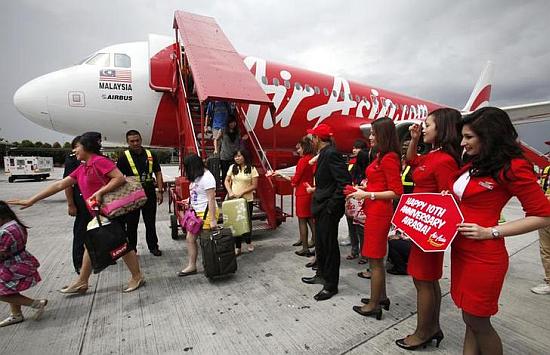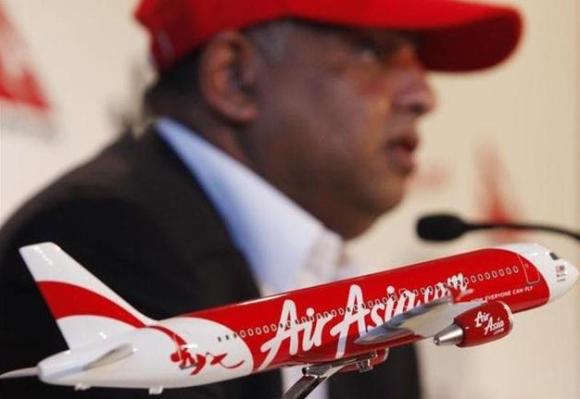
The airline’s entry may trigger charges for every extra service such as baggage and seat selection, and fliers may also have to say goodbye to the friendliness of flight attendants.
So AirAsia wants to cut fares 20 to 25 per cent and add 11 aircraft every year, and Aditya Ghosh of IndiGo, the biggest domestic competitor, says he’s not going to lose any sleep over the Malaysian competitor’s entry.
But what about customers? Conventional market logic suggests that they should relish more competition - after all, it’s supposed to be good for the customer, right?
True, but the impending entry of AirAsia raises a frisson of doubt on that point - and maybe a little regret.
…

Fares are a critical factor in the service industry and, increasingly in the Indian aviation business, the cheaper the better.
More than half the 58-odd million passengers in the domestic airline market chose low-cost airlines in calendar 2012, according to data from the Directorate General of Civil Aviation.
Given that the economy has slowed since then and spending curtailed, the dominance of the low-cost airlines can be reliably expected to continue. Signs of this were already in evidence in the January-to-July numbers.
Low-cost airlines had raised their share to 62.3 per cent of the roughly 35 million domestic passengers who travelled in this period.
How AirAsia will fit into this is hard to predict, since fares have already fallen significantly this year (which explains the expanded market share for low-cost carriers).
…

But one thing that can be predicted with almost regretful certainty is a rapid fall in service standards. When AirAsia’s Tony Fernandes told Business Today that there were no true low-cost airlines in India, he was dead right.
To truly understand the term in all its facets, you need to travel low-cost, no-frills airlines in other geographies where things that we take for granted in India - window seats, generous baggage allowances and so on - are “extras” to be paid for.
Signs of this were already in evidence. An aircraft seat, like a hotel bed, is a sunk cost, and its price is determined by the market.
Fuel accounts for close to 40 per cent of an airline’s cost and is mostly outside the management’s control no matter how many forward contracts it executes.
The revenues to cover these semi-fixed costs, therefore, come from ancillary services - the definition of which expands exponentially the more acute the competition.
…

Globally, established carriers earn almost a fifth of their revenues from ancillary services, though in India it is just two to five per cent.
From meals on board that were bundled into the ticket price, passengers on low-cost carriers had gotten used to paying for meals.
That’s not such a bad thing, since it also provided the opportunity to carry appetising home-cooked food instead of relying on the dubious skills of the flight kitchens. From this summer, however, low-cost airlines imposed baggage restrictions.
State-owned Air India was the first to lower the baggage allowance to 15 kg in May, and IndiGo and JetLite followed in June, charging a steep Rs 250 for every extra kg (Spice and GoAir resolutely stick to the old limit).
This rule has caused minor ructions since Indians, especially holidaying ones, rarely travel light. A passenger association has written a letter of complaint about these practices to the civil aviation ministry, but it is unlikely to alter practices much.
…

It is interesting that Air Deccan, the pioneer low-cost carrier, attempted something similar when it launched but was forced to roll back to the 20-kg limit following complaints, a rare example, perhaps, of first-mover disadvantage.
Now, the cartelisation of practices that emerges in every competitive market (think telecom) will force consumers to get used to this limit. Indeed, IndiGo has not seen a diminution of its market share after it cut the baggage allowance.
Soon, fliers will learn to pay for seat preferences and almost everything else and airlines will become the true-blue low-cost carriers to which Mr Fernandes was referring.
This is the trend in most service businesses globally - in banking, for instance, chequebook facilities and statements are chargeable services. So, in that sense, India’s domestic airlines can be said to be meeting global standards.
The thing about low-cost carriers in India is that they managed to be better than world standards in terms of general ambience and efficiency.
…

There is a very noticeable gulf between the general professional friendliness of Indian cabin crews and the cold-eyed professionalism of foreign ones.
The more monetised the on-flight transactions, the more this is likely to happen and passenger complaints likely to burgeon. AirAsia demonstrates this.
Recently, the Federation of Malaysian Consumers Association said there were 956 complaints last year against the airline against 870 complaints in 2009.
Most of them had to do with rising fares and falling standards, a pointer perhaps to the relation between cost and value.
Domestic passengers, of course, will put up with minor discomforts since flight durations are short, but the uniqueness of the Indian low-cost model will soon be lost.